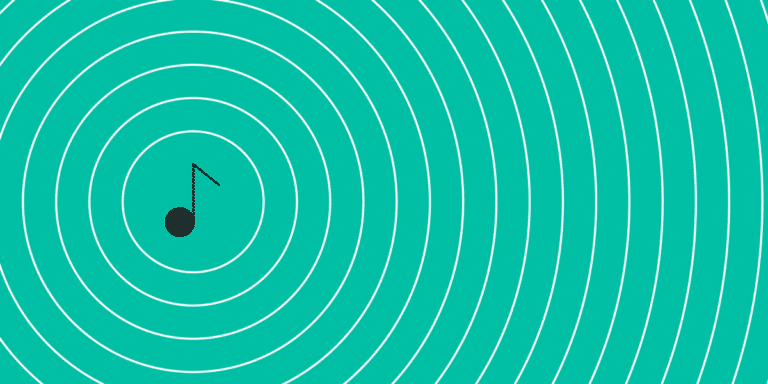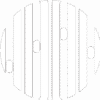Last Updated on May 16, 2022 by IDS Team
It’s hard to find your identity as a guitarist. Whilst it may seem as if there are no more legends along the lines of Steve Vai or Eric Clapton, the meaning of being a guitarist is still constantly changing. Now the ease of digital sound design means everyone has access to similar gear, it’s up to the individual to use it creatively in order to convey a unique sound. Read on for how sound design can help do this and quick tips as to developing your own unique sound.
Sound Design Identity: Understand How DAWs Affect Artistic Identity
In the age of analogue, much of an artist’s sonic identity could come from their gear, whether that was a quirky, refurbished guitar, or the amps and cabinets available in the studio. The shape of the room, it’s furnishings, and the number of people present would all have affected the way the finished product turned out. On a DAW, consistent and controlled settings prevent this variability, thus the ability to create a unique sound belongs to the artist themselves. This means when using a DAW sound designers must get creative with adding the things which would come naturally with an analogue recording- layering reverbs, equalising, and mixing and mastering so their sound has just the right amount of distinctiveness – something especially important for guitarists where so much is reliant on tone and feeling to get the musical message across.
Sound Design Identity: Learn From Your Idols
How did your favourite producers, sound designers, or guitarists get to where they are today? None of them would have been perfect from the get go. What separates them from the thousands of guitarists who give up is the fact that they not only continued trying but that they fine-tuned and adapted their creative processes to avoid ever making the same mistakes twice.
As sound designers- whether you have a small bedroom set up and are just starting out or a personal studio and you may be wishing to reinvent your sound, using plugins to experiment with adding and subtracting things from your sound is one way of ensuring all your tracks are unique and carry that distinctive fingerprint which sets them out as yours and yours alone.
Sound Design Identity: Use Reference Tracks
Reference tracks are a heavy part of the production process, but for any sound designer there is always the risk of sounding too much like your inspirations. It can be frustrating when you don’t have access to the same gear as them and you may spend your time in the studio trying to find that perfect sound. The important thing to realise is that any alternatives you choose will mark you out as separate from your influences and therefore give you more of a creative edge. As a result, embracing differences and realising it’s impossible to sound exactly like your idols is one of the best ways forward – it can separate you from the hundreds of other guitarists who get stuck at this stage. Reference tracks are just that – references, and expecting your work to sound exactly like them limits your creative possibilities. Whether a producer or sound designer yourself – or a guitarist working with a team of other creatives – understanding this can be one of the most freeing parts of developing a creative identity.
Sound Design Identity: Repurpose Plugins and Sounds
Default plugins on DAWs such as Logic are often geared towards some of the most crowd pleasing and popular sounds. This means harking back to the heyday of guitar with rock and hard rock oriented amps which are versatile enough to still be used in modern genres such as indie rock. But what if you want something different? Before shelling out on specialist gear to sound just like your influences, see if repurposing the default plugins on your DAW can achieve similar sounds at a fraction of the price and whilst simultaneously giving your music a distinctive edge. That metal plugin you bought on a whim and have now forgotten about as your band changed direction? Some of the reverb could sound great for one of your darker, moodier tracks, even if it doesn’t strictly fit into the genre.
Think Outside of the Boundaries of Genre
Out of the wealth of plugins available, many are often geared towards specific genres, especially in niches known to sell consistently such as blues. However, these genre labels need not limit you if you truly want to break boundaries a bit. If you’re a rock guitarist, why not use an indie style reverb for a ballad? Or taking that same reverb heavy noise of underground and indie music and using it for experimental or noise music? By looking at your own genre through the eyes of another, you can get a more accurate picture of where you stand within wider sound design and make creative movies which pinpoint your sound yet keep it familiar enough that it can draw in new listeners.
Know What You Need
There is a lot of advice out there on the internet and ultimately every sound designer ha their own way of working. If you haven’t yet found yours, it can be hard to tell what’s relevant. Knowing what you need can bring exponential growth in both your artistic and technical development. Are you a bedroom producer who simply wants some decent reverb to make those low key, soft guitars sound more emotional? Or are you knee deep in technical shred guitar recordings and are looking to ensure every note of a guitar solo shines through? By focusing on what you love, it’s easier to find what you need- and find plugins which really work for you in the process.
Overall, these are just some of the ways in which the process of sound design can help you define a distinctive identity as an artist. By seeing your artistic identity reflected in the plugins you use, waveforms you see, and creative choices which you make, you can further hone and develop your sense of yourself as a musician so that all your work has your own distinctive stamp on it – a compilation of the gear you use and the way you use it in a pattern completely unique to you.



